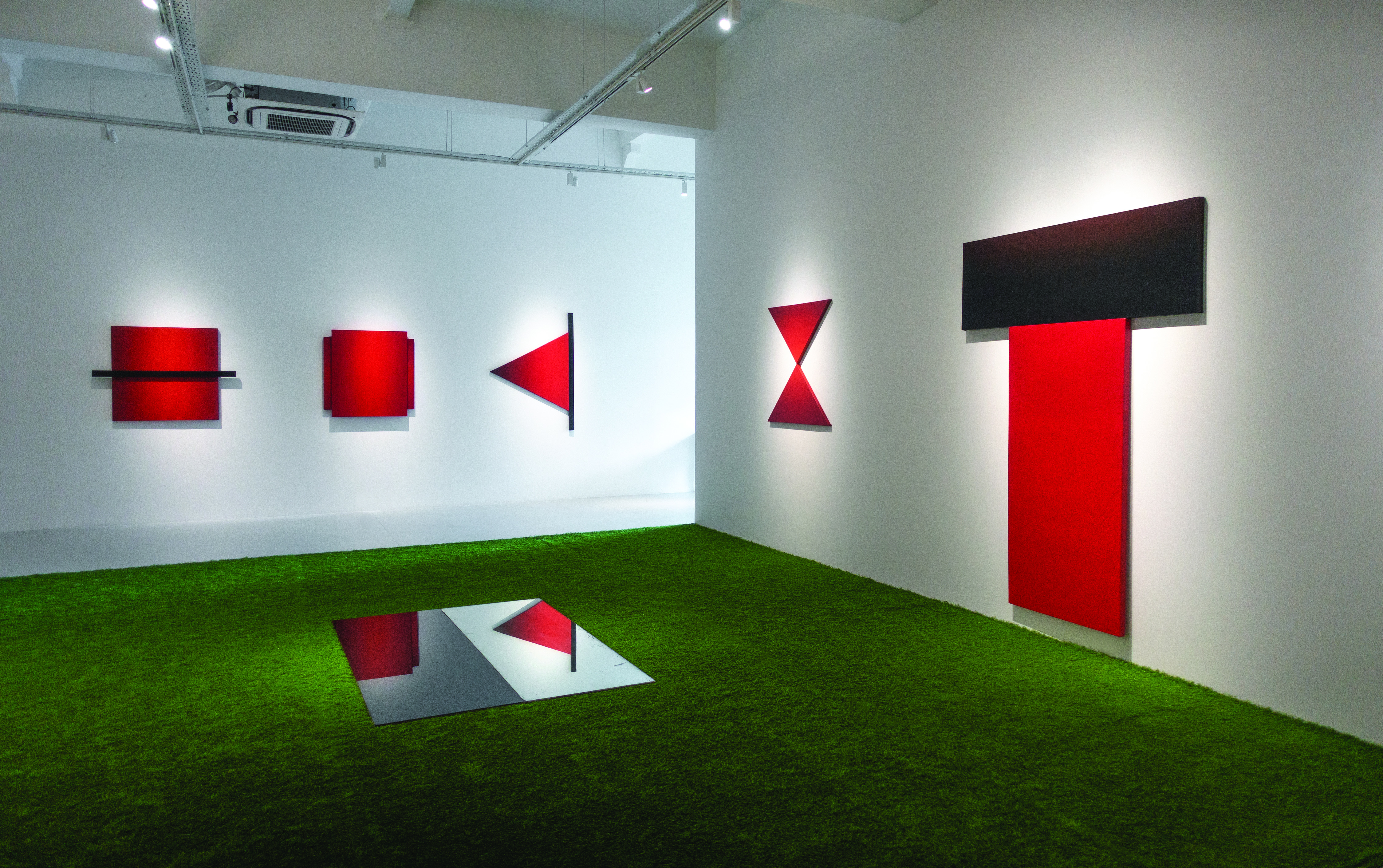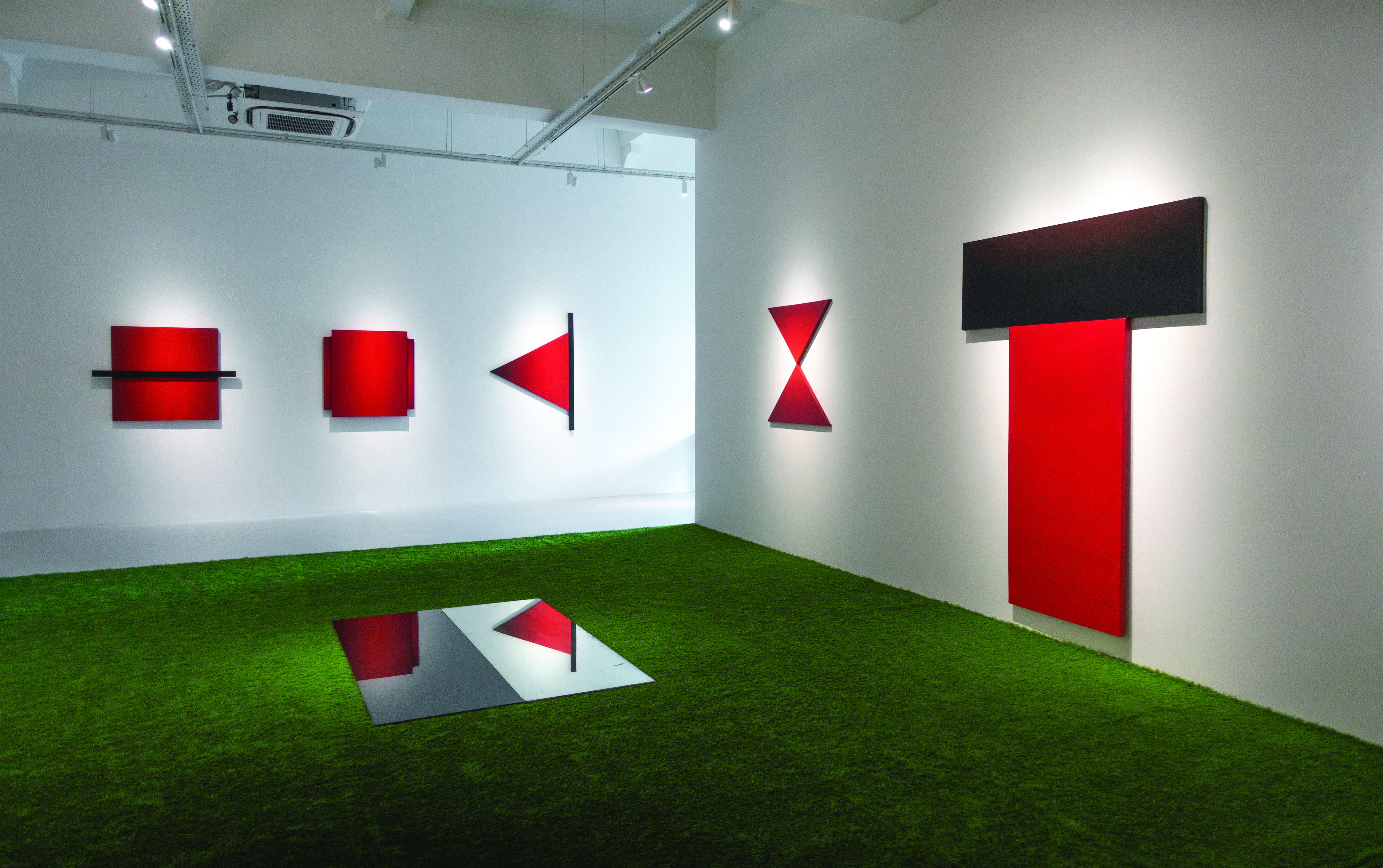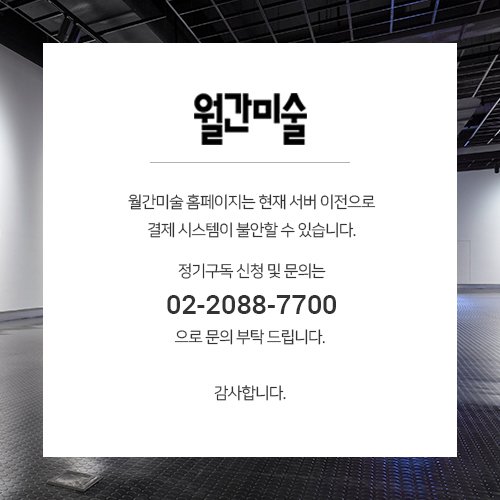
미술이 억압에 맞서 연대하는 방법 2
워홀의 시대
포 포
2021년 2월 1일. 아내가 군부 쿠데타 뉴스를 전한 것은 그날 아침 잠자리에서 막 일어났을 때였다. 이전부터 군부로부터의 위협이 논의되지 않은 것도 아니고, 그 직전에도 사람들 사이에서 화두가 되기도 했지만, 그들이 실제로 화력을 미친 듯이 휘두르며 그리도 정신 나간 짓을 하리라곤 전혀 생각지 못했다. 분명 쿠데타를 일으킬만한 이유도 없었고 정황도 아니었다. 텔레비전을 켰을 때, MRTV(미얀마 라디오 텔레비전)는 군가를 계속 내보내고 있었고 BBC, CNN, NHK, CNA 같은 외신 채널은 방송이 중단되어 있었다.
맨 처음 나의 뇌리를 스친 생각은 부끄러움이었다. 그것도 마음의 깊은 곳부터. 내가 군 장성들이 총을 쥐고 활개를 치는 나라에, 머리가 텅텅 빈 이들이 권력을 쥐고 사람들을 무력으로 제압하는 나라에 살고 있다는 사실 때문이었다. 유엔 사무총장인 안토니우 구테흐스의 말을 빌리자면, “쿠데타란 우리가 사는 근대에 설 자리가 없다.” 이는 모든 시도가 실패를 거듭하며 다시 똑같은 장면으로 반복해서 되돌아가는 공포영화 같다. 미얀마에서 처음 군부 쿠데타가 발발한 것은 1962년이었고, 두 번째는 1988년이었다. 2021년, 우리나라는 군부 쿠데타라는 같은 장면을 반복하며 1962년이라는 시간대로부터 헤어나오지 못하고 되돌아갔다. … 쿠데타가 일어나기 전, 나는 언제나 작업에 집중했다. 2020년에는 싱가포르 야부즈 갤러리(Yavuz Gallery)에서 개인전 〈원시코드〉를 열었다. 전시에서 선보인 작품은 2019년에서 2020년 사이에 제작된 것들이었다. 1980년대부터 학습한 원시적 기호와 상징, 그리고 최근까지 주목했던 공공 표지판에 기반한 작업이었다. 모든 원시적 사인과 상징은 사람들이 더 간략한 방식으로 소통했음을 의미하며, 그것이 내포한 뜻은 그 집단이나 공동체가 사용하면서 결정된다. 나는 고대의 기호에 내가 선호하는 의미를 덧붙였고, 작품에 제목을 붙였다.
나는 어려움을 작품의 강점으로 전환하는 방법으로 환경에서 오는 다양한 도전들과 마주한다. 정치, 사회, 문화, 혹은 환경적 제약과의 관계에서 오는 어려움이 클수록, 그 어려움을 극복할 때 작품은 엄청난 강인함을 품는다. 환경을 다룬 첫 번째 작업은 1987년에서 1994년 사이에 진행한 〈나르키소스〉다. 이 작품은 정치에서의 나르시시즘, 국가주의에서의 나르시시즘, 인종차별주의에서의 나르시시즘, 개인주의에서의 나르시시즘 혹은 나 자신의 나르시시즘까지, 언제나 관심을 두고 있었던 나르시시즘을 다룬다. 나는 우리 모두 나르시시즘의 덫에 갇혀있다고 생각한다. 이 연작을 완성하는 데 7년이 걸렸다. … 나는 〈제3회 광주비엔날레〉(2000)에 참여했다. 광주에서 1980년 민주화운동이 있었다는 사실을 훨씬 전부터 알고 있었기에 광주에 가게 되어 기뻤다. 나는 설치를 끝내고 참배를 위해 광주의 도심으로 가서 시간을 보냈다. 지금 미얀마는 광주 민주화 항쟁이 벌어지던 때와 같은 상황에 처해 있다. 만약 세계에서 일어나는 모든 일이 카르마의 원칙을 따르는 인과관계의 결과라면, 5000만이 넘는 우리가 지난 생에 약 50만 명의 군인에게 지은 업보는 무엇이란 말인가? 우리가 집단적으로 지은 카르마로 인해 고통을 받고 있다면, 또 다른 집단으로서의 카르마를 지음으로써만 살아남을 수 있다. 우리, 민간인은, 가족과 재산 그리고 생명을 담보로 민주주의와 인권을 위해 싸우고 있다. 우리는 반드시 이겨야만 한다. 우리가 이번에 실패한다면 잔악하고 냉혹한 군사 정권 아래에서 지내게 될 것이며, 왕권체제에서와 마찬가지로 “왕을 알현하라!”는 허락에 그저 미소로 그들의 얼굴을 올려다보아야만 하리라는 것을 알기 때문이다.
Warholian Days
Po Po
My wife told me about the military coup just as I woke up on that morning (of 1st February, 2021). Although threats of a coup by the military drew concerns from people and became a topic for conversation in previous days, I did not think they would actually do so. I also did not think they would go so crazy with power or they would do such an insane thing. Clearly, there was no strong reason or situation for them to stage a coup. When I turned on TV in disbelief, I found out that MRTV (Myanmar Radio and Television) was broadcasting continuous videos of military songs and all other channels such as BBC, CNN, NHK and CNA were cut off. A news and information blackout by them began.
The first feeling came over me was being ashamed. Deeply. For I was living in the country where the military leaders with guns in hands but with no brains in heads seized power of the nation and its people by force. To borrow the words of Guterres (UN Secretary General Mr. Antonio Guterres), “Coups have no place in our modern world”. Frankly, all military leaders in Myanmar had abused the country to pleasure themselves and after them, their followers kept raping. By taking the country as a woman, image of such an unpleasant situation can be seen in one’s mind. It is also like a horror movie too as all attempts fail but one gets back to the same place over and over again. (It is called “hallucination in a haunting jungle” in Myanmar.) The first coup was in 1962 and the second time was in 1988. Now in 2021, the country is set back there again. While other countries are competing internationally for achievements in 21st century and making every move to be ahead in every aspect such as political, economic, social, technology and art, our country gets stuck in the 1962 time zone repeatedly.
All expectations, aims, wishes and efforts of citizens, especially the young ones or students, are melted into air. We actually are going through the time harder than a dark age and do not even have blurry vision. We get up when morning comes, with no idea what to do. Time seems stand still and stop. Such the same, unchanged moments are looping here around us. Markets, shopping malls and banks are closed, every single bus-line was stopped, express bus services are no longer working, train services are not available, ports and airports are closed too, and cities become quiet as the grave.
In fact, people were trying to hear the voices of state leaders and ready to follow their instructions. But all the top leaders were detained by military junta. On the morning of 2nd February, the younger generation could not wait in silence anymore as they came to understand the real situation. In the belief that “every carriage has its own engine”, Myanmar Spring Revolution was started. People, young and old, bang pots and pans in many parts of the country at 8 o’clock every night to make noise in opposing the coup.
Banging pots, pans and tin baskets to drive away evil is one of the Myanmar’s olden-day traditions. When there is a threat to life due to a pandemic or a disaster, evil spirits is regarded as a cause of disaster and they are driven out by beating tin basket. Normally on every evening of Myanmar New Year’s Day, monks recite Suttas and people bang pots and pans in rural areas to ward off evil or harm.
Most of the artists, including me, cannot focus on our works well starting from the day the coup began. We try to participate in whatever way we can in the protest movements: some join the protests in the streets; some draw posters and make boards for those protesters; some create artworks and sell them to donate CDMers(employees participating in civil disobedience movement) in need; and some join the EOAs(ethnic armed organizations) in the belief that the success of revolution depends on the fight back by taking up arms.
Before the coup, I was able to concentrate on my works all the time. Even a solo show “Primeval Codes” is made in Yavuz Gallery, Singapore, in 2020. All the works there are realized during 2019-2020, based on the primitive signs and symbols of ancient alphabets learned starting from 1980s, and public signs of transportation being learned until today. Every sign and symbol from ancient time has a meaning to communicate each other in a short way. The meaning of each sign and symbol is determined, accepted and used by a group or a community. But sometimes, the same symbol has different meaning accepted by different groups. It is interesting that how it become. I choose a sign from ancient time and took a meaning what l prefer, and which became the title of the work. It is definitely sure that is not an abstract matter.
Back in early 1990s, I tried to create artworks that go along with the environmental situation which, maybe somewhere indoor or outdoor, support my idea. I like turning the challenge into the strengths of works by dealing with these various unexpected challenges coming up from the environment. I feel that the bigger difficulties come up in relation with politic, social, cultural or environmental limitations, the greater strength the work gets by overcoming the difficulties.
My first environmental work was 〈Narcissus〉(1987-1994). But I did not aim to simply illustrate Narcissus. Though the work was based on a Greek legend, I wanted to depict narcissism at all times: narcissism in politics, narcissism in business, narcissism in nationalism, narcissism in racism and narcissism in individualism or in oneself. We all are trapped by narcissism, I think. It took seven years to complete because, as I tried to solve some difficulties. Meanwhile, I imagined a variety ways to realize my concept. What I really wanted to do was to create it on a grass lawn, just for a day or two, to enjoy it alone. It took times to finding the right lawn that was also wide enough. Once I placed the work on the grass for the first time, the first things I saw were clouds with silver linings in the mirror, like the clouds from another world. I also saw myself, not as me there, but Narcissus instead.

Po Po 〈Narcissus〉 silk, kapook, mirror, rope dimensions variable 1987-94 photo: Kaung Tha Collection of National Gallery Singapore
My last site specific work was 〈Negative Space #9〉 which showed in the 2018 Guang’an Field Art Biennale, China. “Negative space” means neither a negative statement nor a negative mode of stating something, nor the aspect of a question which is opposed to the positive side literally. It means ‘an effort to approach alternative ways to the spaces around us or the space beyond world ’. To put it simply, it was trying to show a mould or a reverse side of a piece of sculpture never seen by the audience.
Relating the space in the work, I, for the first time, noticed it in; 〈Woman Combing Her Hair〉(1915) by Archipenko, a Russian sculptor. In that sculpture, he cut out the face of the figure and left the void as a head. Before him, nobody expressed the space as a solid form. And I noticed again the space in the sculptures of Henry Moore, a British sculptor. In some of his sculptures, by cutting out some parts of human body, he powerfully arranged the relationship of hollows to mass. Then, I had a desire to present the space only as a solid form. One night considering those facts, I had a dream and in that, I saw something like “Negative Space” was installed in a huge hall. When I had regained consciousness, I did not know what it meant yet. One month later, I was aware that was what I wanted.
And again, I have to say something concerned with the form. It is very old and can be seen above the Buddha statues in Myanmar and everywhere concerning religious sites. According to the scripture of Buddhism, the future Buddha (Arimiteija, the last of the five Buddhas, and the one who is coming to spread enlightenment in this world) donated a canopied ceiling (we call it ‘bei-dan’) to Godama (the fourth one who had enlightened already). As the consequence, when he gets enlightenment, there will be a ceiling wherever he is.
Most of my works are related with Buddhism in some ways. Some were created by referencing directly from the Buddha Abhiddhamma (the higher teaching of the Buddha). For example, the five paintings series: Pathavi, Tejo, Apo, Vayo, Akasa, the collections of Mori Art Museum, Tokyo are based on Abhiddhamma definitely. And some were made by applying some traditional forms of Buddhist culture. For example, 〈Red Cube〉. I just simply tried to show my idea without personal feeling of the artist. But I have been dealing with variety of subjects and making art works with multiple approaches. Of course, the forms of some pieces were minimal, I realized. This is partly because I like the few touches, simple structures and forms which is just-right. I did not aim them to be concerned with minimalism.

Po Po 〈Akasa(Space)〉 oil on canvas 75×75cm 1985 Collection of Mori Art Museum

Po Po 〈Negative Space #9〉 fabric, string, iron rods, brass bells 2018 Installation view of 〈The 2018 Guang’an Field Art Biennale〉, China photo: Wang Chunshun
Actually, I also participated in 〈3rd Gwangju Biennale〉(2000). I felt delighted as I was one of the artists there and also excited to be in Gwangju for the very first time. Because I knew long ago that in the city of Gwangju in Korea, the democracy uprising was started in 1980. I took time to go to downtown Gwangju where protestors gathered to show my respect towards them after finishing the work installation at the exhibition hall. Lastly, I would like to take this chance to thank all countries and people that stand with Myanmar people and support our Revolution on the way with their heart and soul, especially Korean who take the active part.
Our country is in that same circumstance with democracy uprising today. If everything that happens in this world is the consequence of the cause according to the law of karma in Buddhism, then what kind of collective sins did we, more than 50million people, commit against those military groups of about 500,000members, in our past lives? I thought that if we are suffering because of our collective karma, we can only survive from this situation by means of another collective karma. We, the civilians, are fighting for democracy and human rights by sacrificing lives, families and properties. Hence, we must win. We have decided to fight in any way we can until the end. Because we also know that if we fail this time and have to stay again under the control of the cruel, inhuman and heartless military junta, we will have to glad just to look up their faces with their permission “Behold the king!”, like the old monarchs.

Installation view of 〈Primeval Codes〉 Yavuz Gallery, Singapore 2020 photo: Yavuz Gallery Courtesy: the artist
포 포는 1990년대 해외에 작품을 선보인 최초의 미얀마 작가이자 퍼포먼스, 회화, 조각, 설치, 건축을 망라한 작품세계로 주목받았다. 현재 양곤에서 활동하고 있다. 최근 개인전 〈원시적 암호들〉(2020, Yavuz Gallery, 싱가포르)을 열었으며, 〈훔쳐보지 마시오〉(2019, Cement Fondu, 호주), 〈미니멀리즘: 공간. 빛. 오브제〉(2018, 내셔널갤러리 싱가포르), 〈맑은 날 오는 비: 1980년대부터 현재까지의 동남아시아 현대미술〉(2017, 모리미술관, 국립신미술관) 등 유명 기관에서 열린 기획전과 2000년 개최된 〈제3회 광주비엔날레〉에 참여했다.
《월간미술》6월호 특집기사 〈미술이 억압에 맞서 연대하는 방법〉
© (주)월간미술, 무단전재 및 재배포 금지








